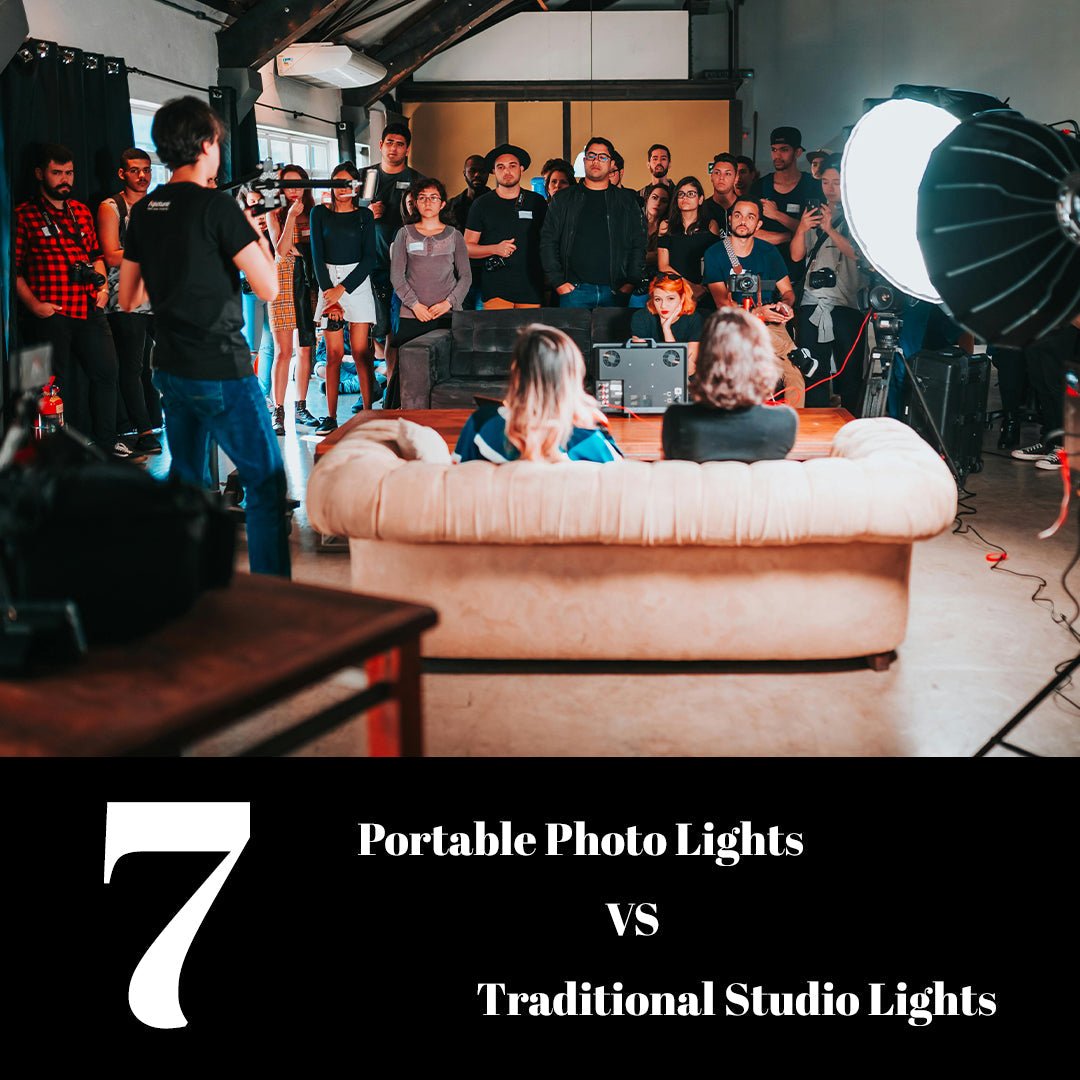In the world of light and shadow, the tools you choose often define the boundaries of your work.
For photographers and visual creators, lighting equipment is key to shaping a scene’s mood, texture, and even narrative. In recent years, portable photography lights (such as LED tube lights, pocket-sized panels, and compact COB lights) have rapidly gained popularity, while traditional studio lights (like large strobes and high-power continuous lights) still dominate professional studios. Faced with these two distinct categories, many creators face a dilemma: Which type better aligns with their creative needs?
I. Portable Lights: Freedom and Creative Fluidity
Strengths:
Mobility Reigns Supreme
The core advantage of portable lights lies in their lightweight design and speed. Whether shooting street photography, outdoor portraits, or short videos, their battery-powered operation frees creators from relying on outlets. For example, an RGB tube light can fit into a backpack, adding warm tones to portraits at dusk or creating sci-fi ambiance in a nighttime forest.

Low-Barrier Experimentation
Many portable lights feature app control, RGB color tuning, and preset effects (e.g., lightning, TV flicker), enabling solo creators to experiment with complex lighting on a budget. Two pocket-sized lights with softboxes can mimic natural window light in tight spaces.

Versatility Across Scenarios
From product photography to live streaming, portable lights adapt quickly. Some models (e.g., GVM 300 series) even rival studio lights in brightness using V-mount batteries, blurring the line between "portable" and "professional."
Limitations:
Power output and light quality often fall short of large studio lights, especially for high-intensity or wide-coverage setups
Heat dissipation and battery life may limit prolonged, high-intensity use.

II. Traditional Studio Lights: Precision and Excellence
Strengths:
Unmatched Light Quality
Studio lights (particularly strobes) deliver rich, directional light through high power and professional modifiers (e.g., parabolic softboxes, beauty dishes). In commercial portraits or luxury product photography, their ability to render skin textures, metallic reflections, or glass translucency remains unrivaled.

Stability and Scalability
Studio systems support multi-light synchronization, high-speed sync, and long-term upgrades. In fixed studios, they act like a conductor’s baton, precisely orchestrating every beam’s intensity and angle.

Long-Term Cost Efficiency
Despite higher upfront costs, studio lights offer durability and low maintenance. For full-time photographers, cost-per-use often becomes more economical over time.
Limitations:
Dependent on fixed locations and AC power, outdoor shoots require generators or battery packs.
Steep learning curve—beginners may need months to master complex lighting setups.

III. The Deciding Factor: What’s in Your Creative DNA?
Choosing lighting gear is ultimately about selecting a workflow and visual language. Ask yourself:
Is your work on the move?
Choose portable lights for weddings, travel projects, or run-and-gun videos.
Opt for studio lights for fixed studios or high-end commercial shoots.
Do you prioritize speed or perfection?
Portable lights suit content creators needing "plug-and-play" efficiency.
Studio lights remain essential for crafting meticulous "lighting infrastructure."
Can your budget accommodate both?
Many professionals hybridize: use studio lights as key lights, portable lights for accents or ambiance, or even hide small LEDs as "lighting Easter eggs."
IV. The Future: Blurring Boundaries
Technology is reshaping the lighting landscape:
Portable lights now rival studio outputs (e.g., 1000W+ LEDs).
Studio lights are shedding weight (some fit into carry-on luggage).
Smart control systems enable seamless collaboration between both types.

Conclusion: Tools Are Brushes—Your Canvas Decides
There’s no "perfect" light, only the "right" light. Portable lights are the daggers of guerrilla warfare—agile and sharp. Traditional studio lights are the artillery of structured battles—powerful and reliable. The wisest creators let them complement each other, adapting to themes, budgets, and moments of inspiration.
Ultimately, what elevates your work isn’t the price of your gear but your imagination in sculpting light.


0 comments